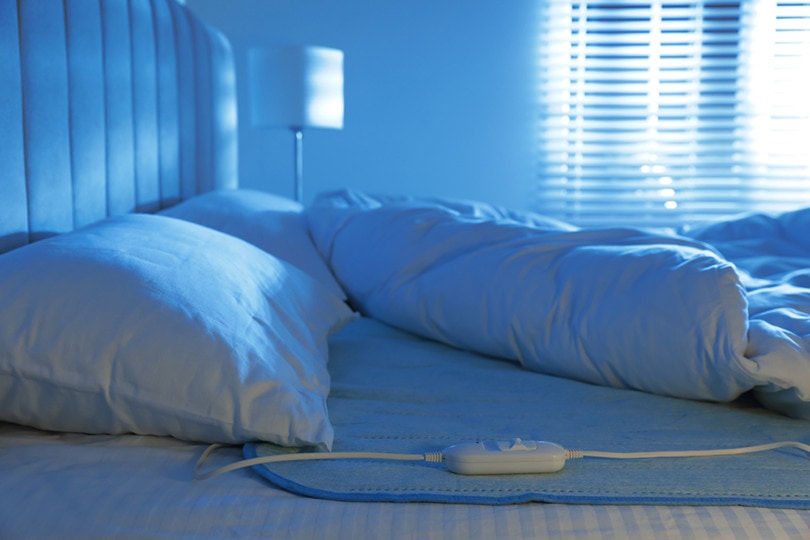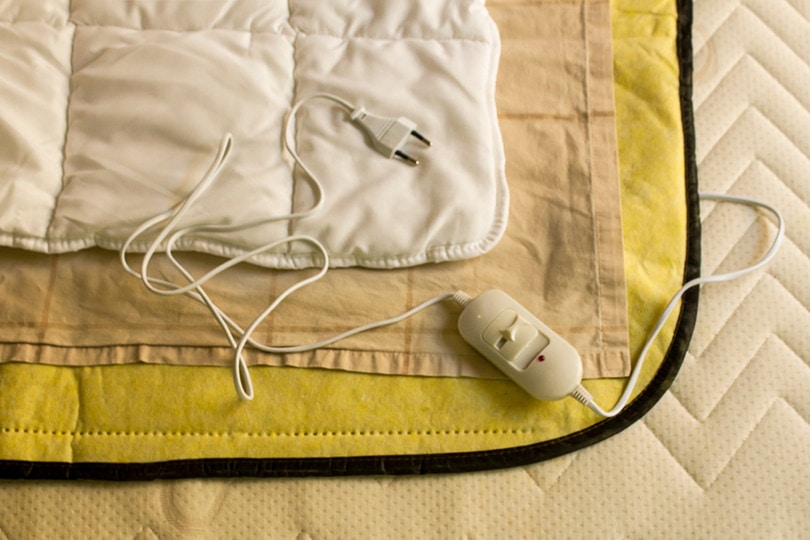How Many Watts Does an Electric Blanket Use? Is It Costly to Run?
-
Pete Ortiz
- Last updated:

Keeping warm quickly becomes a top priority as the temperature drops and the winter chill kicks in. Electric blankets are a fantastic way to stay warm and cozy, and nothing beats that feeling of climbing into a warm, toasty bed. While an electric blanket can help the temperature go up, so can your electricity bill, so if you’re wondering if it’s costly to run one, we break it down for you in this article.
Understanding how to calculate the cost of running an electric blanket is one of the most effective ways to reduce costs. You’ll need to know how many watts your blanket is, how many hours you use it per day, and your electricity rate, to calculate how much it costs to run it.
Electric blankets typically have 100 to 150 watts of power. An electric blanket does not consume much energy when used properly.
How Many Watts Does an Electric Blanket Use?
Many appliances will tell you how much energy they use, but an electric blanket is adjustable, so it may be more challenging to determine how much power it uses. A tip you can use to determine how much energy your blanket is using is to switch off everything in your home and check your electricity meter. Turn your blanket on and check the meter reading.
Examine the tags on the blanket or consult your owner’s manual to determine the wattage consumed by your electric blanket. If you are purchasing a new electric blanket, the label or package should include the appliance’s wattage.
You can also calculate watts by multiplying the Amps by the Volts. For example, 5 Amps x 24 Volts = 1,200 Watts.

How Much Does It Cost to Run an Electric Blanket?
The cost of running an electric blanket can be calculated with a simple equation: wattage x time used in hours x price per kilowatt hour. The formula for calculating watts into kilowatt hours is kWh= (watts X hours) ÷ 1,000.
The electric company bills its customers in kilowatt-hour increments. The cost of a kilowatt hour will vary according to where you live. Some utilities have options in which you pay more during the day and less at night. You will need to check your electricity bill to determine your cost per hour.
The cost of electricity varies significantly by state. You can check Electric Power Monthly to check the cost per kilowatt in your state.
The wattage of an electric blanket is usually printed on the tag. The manufacturers often overstate the usage to cover their bases, which is most likely calculated for year-round use for more than 8 hours at a time, which is never advised.
Electric blankets are subject to stringent UL ratings; it is uncommon to find an electric blanket that consumes more than 100 watts. Electric blankets typically have 100 to 150 watts of power. An electric blanket does not consume much energy when used properly.
Let’s say you use your 100-watt electric blanket for about 7 hours a night, 3 months of the year; your consumption will be 63 kWh per year.
To help you get a better estimate, we found three electric blankets with different wattages and calculated the cost of using that specific blanket at an average of 15 cents per kWh for 8 hours per night for 3 months. This will give you a reasonable estimate to work from, considering winter is about 90 days, and you are not likely to have your blanket on all night.

| Electric Blanket | Size | Watts | kWh | Average price per year |
| road Black Canyon Outfitters travel blanket | 15 x 12 inches | 55 watts | 39.6 kWh | $5.94 |
| CKWGI electric blanket | 59 x 52 inches | 100 watts | 72 kWh | $10.80 |
| Dr. Watson Klarstein electric blanket | 70 x 50 inches | 120 watts | 86.4 kWh | $12.96 |

How Using an Electric Blanket Can Reduce Energy Consumption
Electric blankets are not costly to run and can be an energy-efficient way to keep warm in winter. Central heating can be incredibly wasteful. An electric blanket on the bed or a portable throw keeps you toasty and warm, rather than using energy to heat a whole space.
Different models include different features that can help reduce energy usage. They can heat your feet or have different temperatures on each side for couples who disagree on what is warm enough and what is too warm. Some can include timers so they can be turned on and off. Temperature levels can also be changed very quickly, saving energy usage.

Choosing the Right Electric Blanket
If you’re thinking about buying an electric blanket to keep you warm on those chilly nights, consider the following features.
- Consider the weight of the blanket; a heavier blanket will keep you warmer.
- Thinner, more flexible wires make it easier to wrap yourself in the blanket, so you are more relaxed, comfortable, and extra toasty.
- Consider the fabric for optimal comfort and warmth. Microfleece and plush sherpa are popular choices.
- Choose a blanket with auto-shutoff to give you peace of mind after leaving the house.
- A pre-heat setting can be helpful for maximum warmth, saving energy and safety. It will stay at its highest temperature for 15–20 minutes, then drop to the setting you select.
- Consider the number of settings it offers. The more settings you have, the more likely you will find the perfect balance between staying warm and using the lowest amount of wattage.
- Make sure your blanket has a warranty. If it malfunctions or something breaks, the warranty will replace the blanket or parts at no cost to you.
Final Thoughts
The wattage of an electric blanket will vary, and because it can be adjusted, it may be difficult to know precisely. The amount of energy consumed is determined by the wattage, which is typically between 100 and 150 watts. They don’t use much power and are one of the most cost-effective ways to keep warm in the cold months. As long as you use your blanket properly and safely, it will keep you toasty without raising your utility bill significantly.
Featured Image Credit: Agenturfotografin, Shutterstock
Contents


